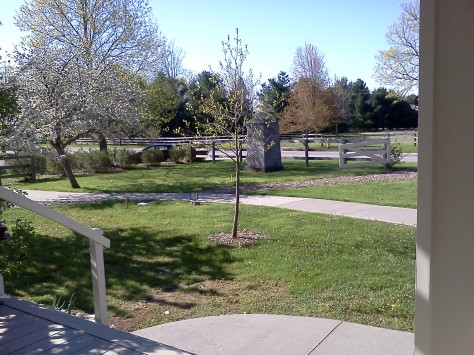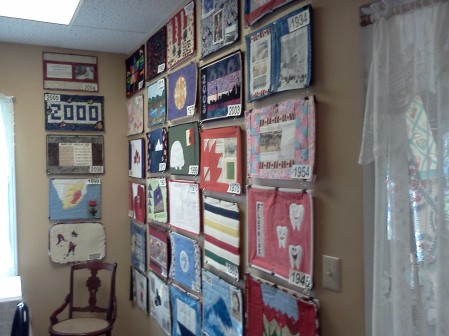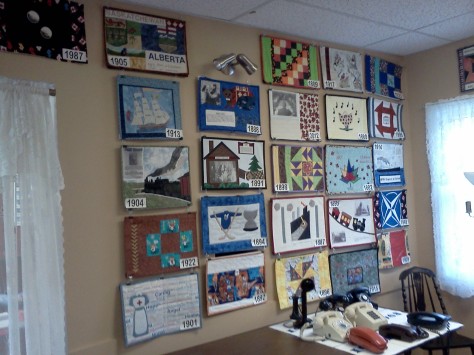July 31st – August 11th
The formal part of my internship has been completed.
Although I’m not saying goodbye to the Homestead just yet- I’ve still got an Outreach event to run and a summer camp to help oversee- my time as an official Fleming College internship has come to an end. It’s been a good summer. I’ve had a chance to meet people from all over the world, and hone my skills as a historical interpreter while also working on creating and delivering educational programming. Since interpretation and education was what I wanted to focus my internship upon, I’d say it’s been pretty good.
The last two weeks of the internship have been pretty quiet, though like I said in my last journal, quiet does mean it wasn’t very busy. The business just seems very routine at this point. Now that we’ve tested all the day camp activities, I need to get them ready to go. At this point, this mostly means making a great number of dinosaur bone castings so that all the campers will have enough, as well as ensuring that we’ve got enough scavenger hunt sheets printed and that the example crafts are all ready to go.
I’ve also got to make sure that the activities I developed for our Outreach event in Hamilton is ready, though I’m sorry to report that my anthotype experiment failed. It looks like we will not be offering it during “The Art of Communication”. On a happy note, while rebuilding my camera obscura so that it will passively project images again, I used a different material (wax paper) for my screen which improved visibility greatly. I had some reservations about using the camera as an interactive piece since it worked so poorly indoors. Now, indoor projection is possible and outdoor viewing is extremely clear. It’s quite impressive.
That’s pretty much it for the internship. Now, however, I have a little more to share about the project I’ve been working on in the evenings.
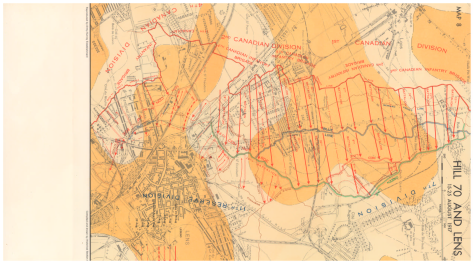 The Battle of Hill 70, though rather forgotten today, was an important battle for Canadian troops during the First World War. It was the first action where all four Canadian divisions were under the command of a Canadian (Vimy Ridge had been conducted under the over command of Sir Julian Byng. Hill 70 was General Sir Arthur Currie’s first solo command). The goal of Hill 70 was to bottle up the German troops guarding the towns of Lens, occupying them so that they could not reinforce the battle already going on at Passchendaele.
The Battle of Hill 70, though rather forgotten today, was an important battle for Canadian troops during the First World War. It was the first action where all four Canadian divisions were under the command of a Canadian (Vimy Ridge had been conducted under the over command of Sir Julian Byng. Hill 70 was General Sir Arthur Currie’s first solo command). The goal of Hill 70 was to bottle up the German troops guarding the towns of Lens, occupying them so that they could not reinforce the battle already going on at Passchendaele.
Currie’s masterful plan was a lighting fast attack on Hill 70, a strategically important location overlooking Lens itself. He knew that the Germans could not allow Hill 70 to come under Canadian control, as artillery on Hill 70 would have been able to strike their defences in the city itself. Currie’s plan was that as soon as his troops had won the Hill, they were supposed to dig and switch their offence to a defence. The Germans, forced to attack Hill 70 to save their position in Lens, would find that the Canadians had prepared extensively and had a system of artillery observers who could call down precision barrages wherever German troops could be seen. For the few Germans that got through, they found that the Canadians had managed to dig new trenches and defences, and, thanks to a system of communications trenches connecting the Hill to the Canadian rear, were able to bring in huge numbers of reinforcements and ammunition.
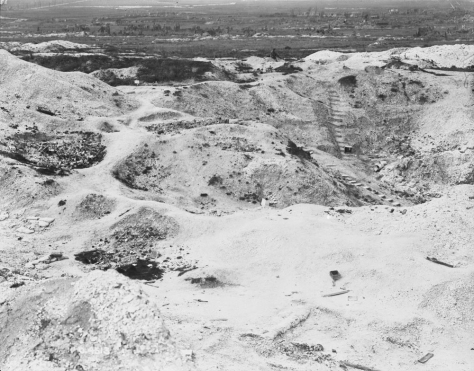 After twenty-one counter attacks over the course of three days, the Germans gave up. Hill 70 stayed in Canadian hands for the rest of the War.
After twenty-one counter attacks over the course of three days, the Germans gave up. Hill 70 stayed in Canadian hands for the rest of the War.
The local connection comes from the 107th Pioneer Battalion, also known as the Timberwolves. They were a mostly Indigenous battalion charged with building communications trenches while under fire right after the main attack. These guys were no construction crew- they were fully trained infantrymen who carried a full loadout of weapons into the battle. They just had a different responsibility once the Hill was taken. The men of the Six Nations who served in the Great War mostly ended up in the 107th, so the exhibit not only commemorates the battle, but the lives of two of them:
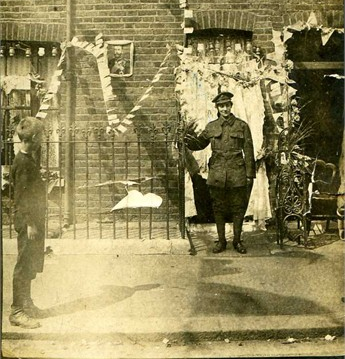 Wilfred Lickers, who served as a private and
Wilfred Lickers, who served as a private and
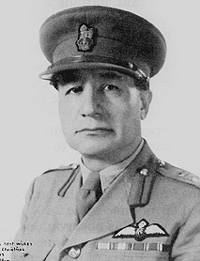 Oliver Milton Martin, a lieutenant.
Oliver Milton Martin, a lieutenant.
Although Lickers went back to farming after the war, Martin’s path was different. He became a school teacher in Toronto and stayed involved in the peacetime militia. He would rise through the ranks to command the Dufferin Rifles Regiment by 1935, and would also be appointed principle of Danforth Public School. When the Second World War broke out, Martin became head of the training camp at Camp Niagara, where he would rise to the rank of Brigadier-General, which is the highest rank any Indigenous soldier has ever held in Canada. After retiring in 1944, Martin would be appointed a provincial magistrate, which he would serve as until his death. During his later life Martin, as one of the best known Indigenous men in Canada, spoke out about the condition of his people and urged tolerance and acceptance from the government and the public in interviews and in his own writings. He died in 1957.
As you can expect, the lives of these men (especially O.M. Martin) hold special importance for the local Six Nations. I made sure to complete the panel text for Lickers and Martin last week, so that there was time for it to be vetted and approved. I’m happy to say that it was returned with only minimal changes. At this point I am completing the text for the Hill 70 case (the exhibit consists of a case for Lickers, a case for Martin and a large case for Hill 70) and finalising the design of each case. This weekend will be spent constructing the mounts and backdrops for the case. Since there are few artifacts (just a few medals) and most of the exhibit is made of reproduction photographs, there is not too much to do- though I am planning on creating a simple mount of foam for the medals, which will keep them from slipping on the angled bottoms of the cases. Everything else will be held in place by double-sided tape.
The commemoration event in the 15th of August- the One Hundredth Anniversary of the beginning of the Battle. It’s a tight deadline, but I’m not too worried- all the images that we’ll need for the exhibit we have permission for (and copies of), most of the text is ready (and the rest is pretty well there), the designs will be completed soon, and the actual exhibit has been designed to be simple to construct and install- I’m mounting the images onto a black piece of board which will be set into a tabletop case on an angle, with the medals in the foam mounting going in last. It’s nothing big or fancy, but I think it will look good.
I’ll post pictures once it’s complete,
Scott W. E. Dickinson
[Edit: Now that the exhibit has been completed, check out my portfolio for some pictures of the exhibit!]
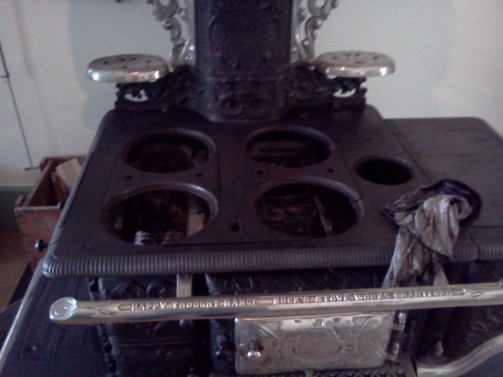 Speaking of polish, I also got a taste of 19th-century style cleaning when I was asked to clean out the Homestead’s wood-fired cookstove. After removing the ashes from the interior, I polished the exterior and we fired it up to burn off the excess polish.
Speaking of polish, I also got a taste of 19th-century style cleaning when I was asked to clean out the Homestead’s wood-fired cookstove. After removing the ashes from the interior, I polished the exterior and we fired it up to burn off the excess polish. 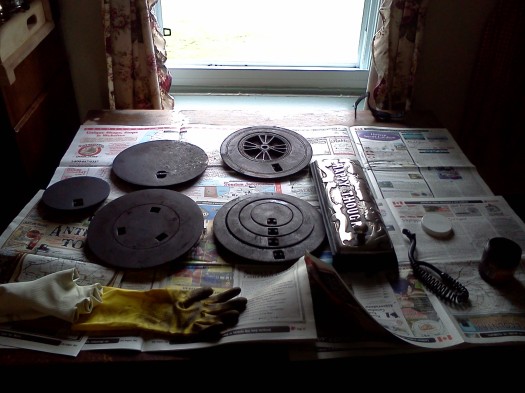


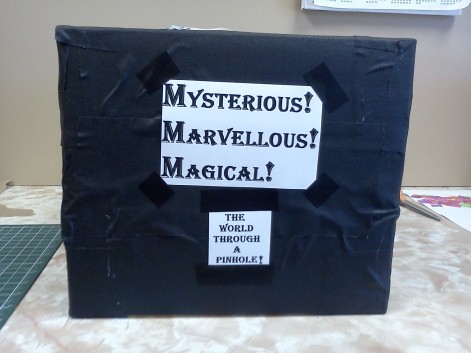 I added a bit of decoration to the Camera Obscura I built a few weeks ago, and tried to create some photographs with it.
I added a bit of decoration to the Camera Obscura I built a few weeks ago, and tried to create some photographs with it.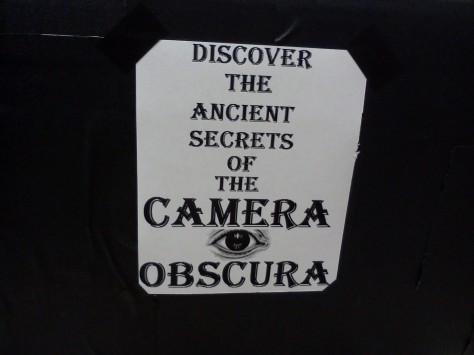 Early photograph cameras were simply Camera Obscura boxes, so I thought that I might have a chance of getting it to work.
Early photograph cameras were simply Camera Obscura boxes, so I thought that I might have a chance of getting it to work.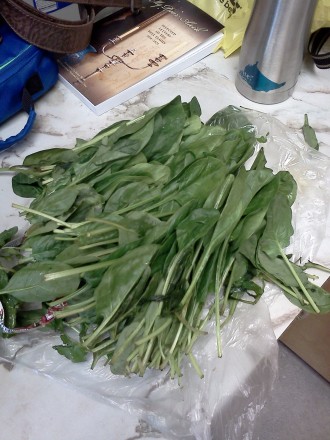 You only need to exposure your spinach based film for several hours, compared to the several days that film based on other plants will require.
You only need to exposure your spinach based film for several hours, compared to the several days that film based on other plants will require.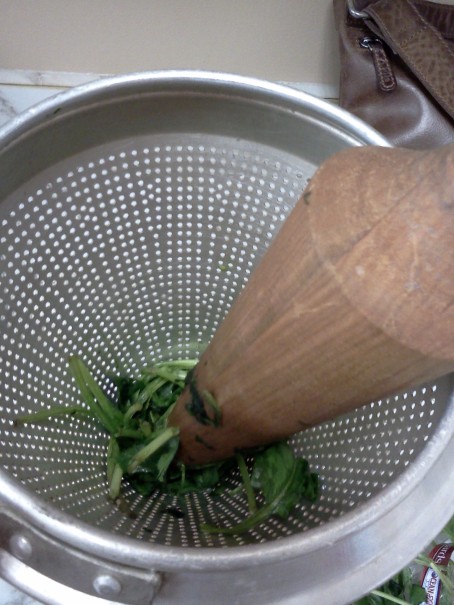 I crushed the spinach to extract its juice, then added a small amount of vinegar to help release the chlorophyll that will react with sunlight to produce our picture.
I crushed the spinach to extract its juice, then added a small amount of vinegar to help release the chlorophyll that will react with sunlight to produce our picture. 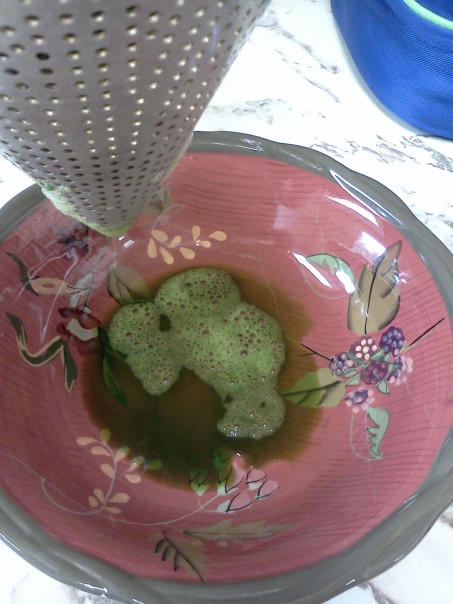 The spinach-vinegar solution is painted onto paper in several coats, and then placed in the camera for exposure.
The spinach-vinegar solution is painted onto paper in several coats, and then placed in the camera for exposure.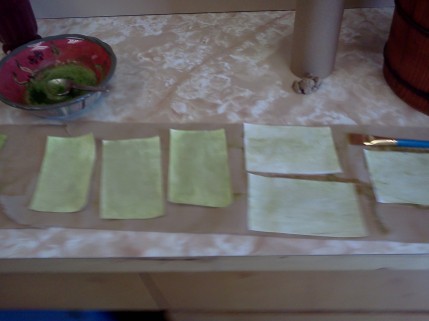
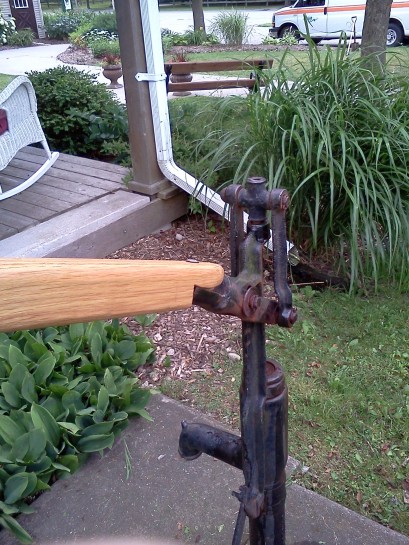
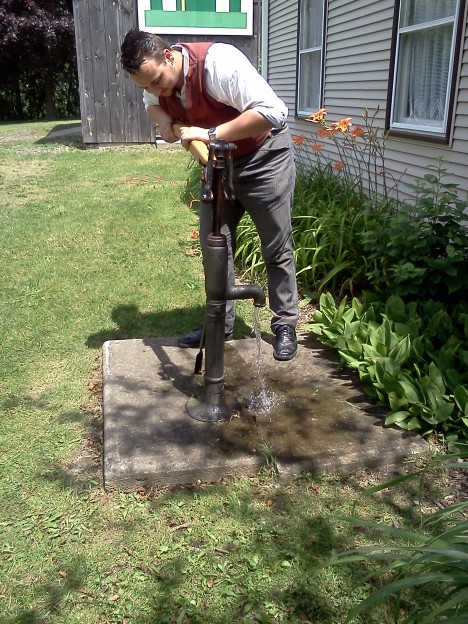
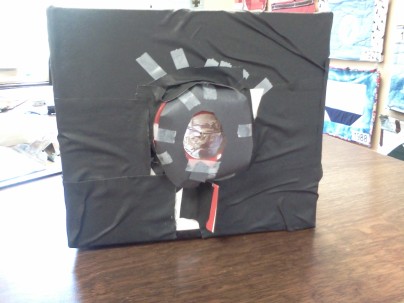
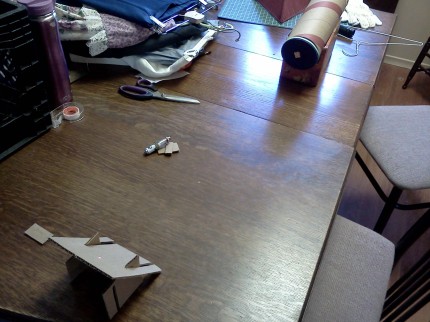
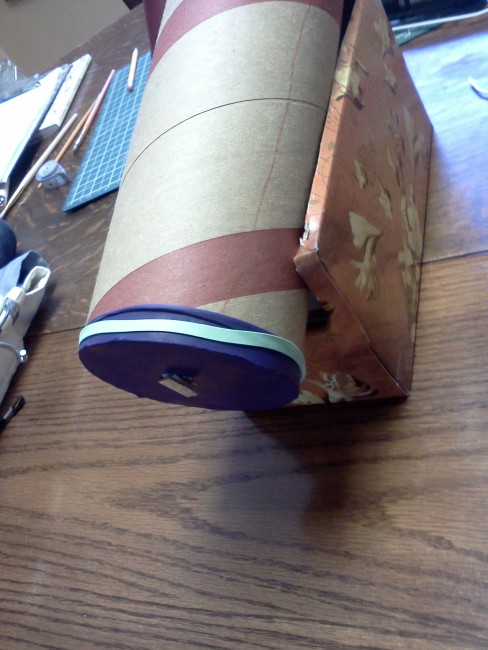



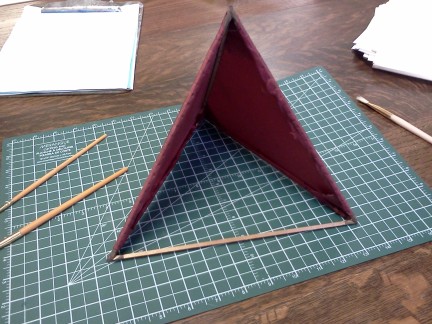
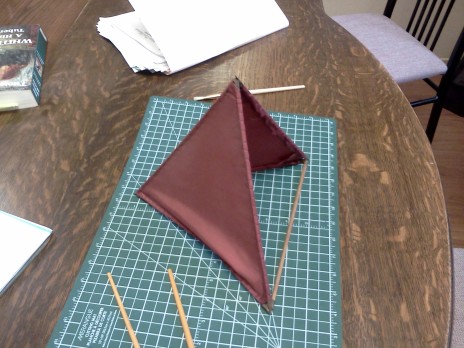


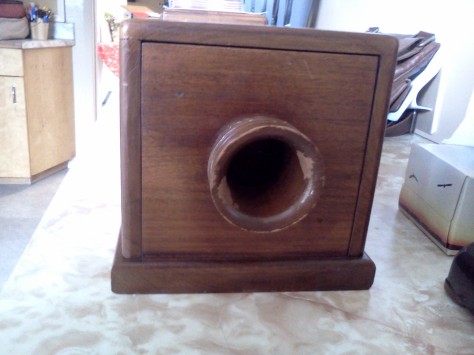



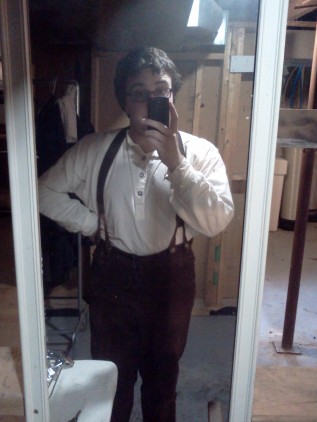
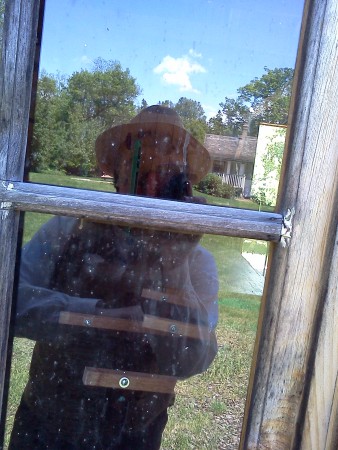


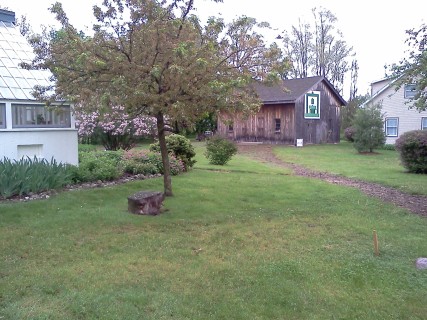
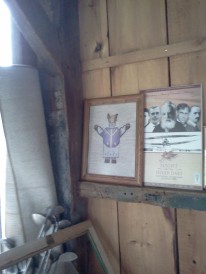
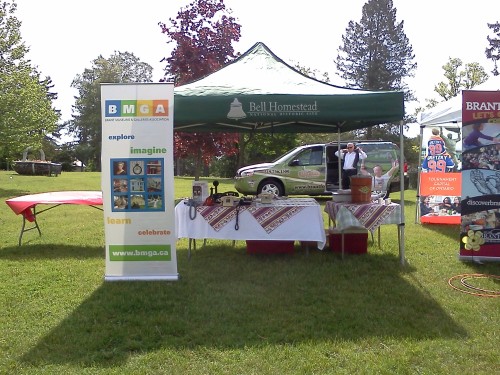
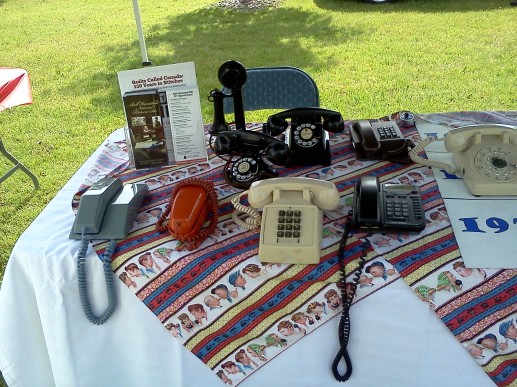
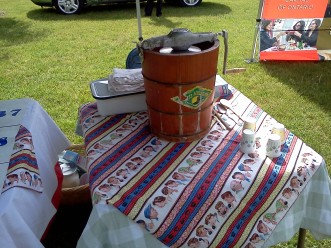
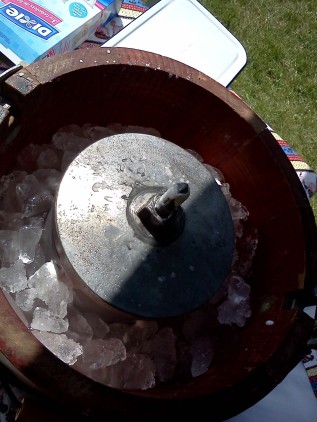
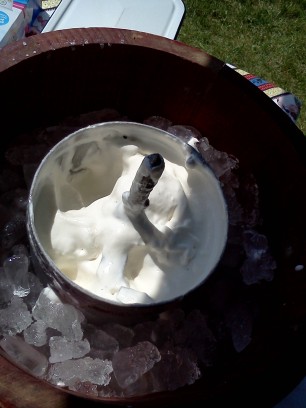
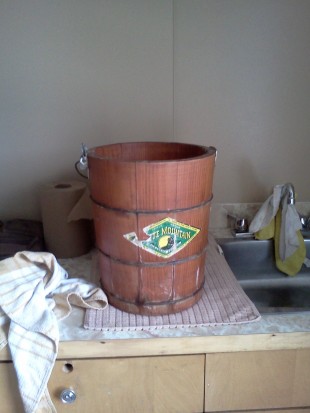
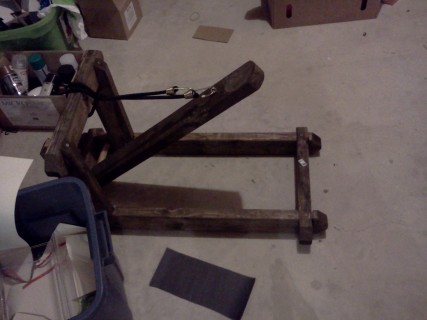
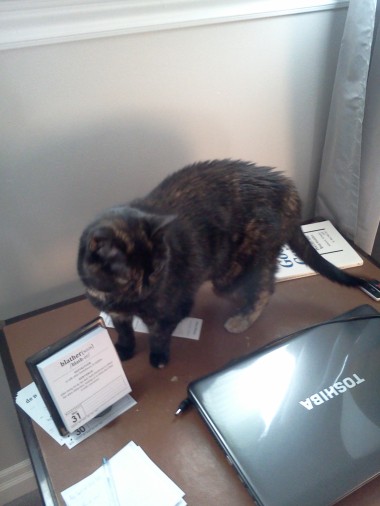
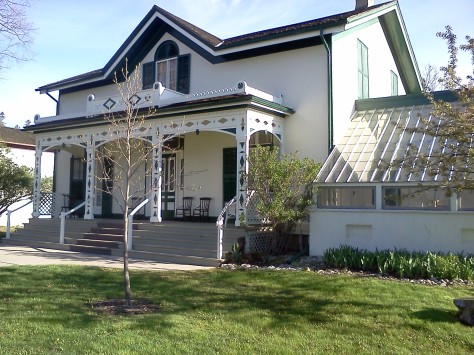 My first days were spent in getting familiar with the National Historic Site. The Bell Homestead contains Melville House, the house the Bell family occupied when they emigrated to Canada, Henderson House, the first office of the Bell Telephone Company of Canada and the visitor’s centre, which is a modern building and houses the gift shop, theatre and offices. Artifact storage is in various parts of all three buildings, in areas off limits to guests.
My first days were spent in getting familiar with the National Historic Site. The Bell Homestead contains Melville House, the house the Bell family occupied when they emigrated to Canada, Henderson House, the first office of the Bell Telephone Company of Canada and the visitor’s centre, which is a modern building and houses the gift shop, theatre and offices. Artifact storage is in various parts of all three buildings, in areas off limits to guests.